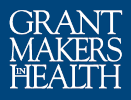Jessie Kelly, Project Manager, CDC Foundation
In the last few years, there has been an increased number of extreme weather events, including wildfires, tornadoes, hurricanes, floods and heatwaves in the United States. In 2023, the United States experienced 28 disasters that cost at least $1 billion, the largest number of billion-dollar disasters in a single year on record (Smith 2024). While some areas of the country are more susceptible to these threats, there are no regions immune to disasters. According to a recent Gallup poll, 37 percent of adults in the United States report they have been personally impacted by at least one extreme weather event in the last two years, which is higher than the 2022/2023 survey result at 33 percent (Jones 2025).
In January of this year, unprecedented wildfires ravaged the Los Angeles area, burning almost 60,000 acres, an area larger than Washington, DC (Guzman 2025). Between March 13–16, dozens of tornadoes tore through 12 states causing extensive damage to homes and businesses (CDP 2025). Arkansas alone experienced five tornadoes that were level 3 or stronger. Researchers are forecasting an estimated 17 storms in the Atlantic basin this year, which is close to the number of storms in 2024, the most devastating and costly hurricane seasons on record (Lada 2025). Back-to-back disasters, like hurricanes Francine and Milton in 2024, or the tornadoes that hit Arkansas in March 2025, have compounding and devastating impacts on communities and the people who live there. When communities are dealing with the aftermath of one disaster and another occurs, they are set further behind in recovery. In addition to the damage to local infrastructure, access to safe drinking water, electricity, food storage, and air conditioning and heating are lost. These developments have major implications for health. For example, unsafe drinking water can lead to an increase in vector-borne diseases, lack of electricity makes medical equipment inoperable, and lack of air conditioning can cause heat-related illnesses.
Included in this conversation must also be “low-attention disasters,” which are defined by the Center for Disaster Philanthropy as localized disasters that do not get the media coverage, national disaster response, and overall attention and resources necessary to assist with damages (CDP). To state it plainly, disasters are increasing in regularity and intensity and have devastating impacts that are costing more than ever before (NCEI 2025; Climate.gov 2025). Communities need resources, including funding and technical assistance opportunities, to help them better prepare for and adapt to extreme weather events.
Current Landscape
The federal Inflation Reduction Act was passed in 2022 and included more than $300 billion for funding environmental programs by directing support to the communities most in need. Recent federal funding reductions have reduced support for communities to address the health impacts of extreme weather. For instance, Environmental Protection Agency reductions included funding for regional technical assistance centers that supported community-based organizations (CBOs) in disaster preparedness and response efforts. Local communities that relied heavily on federal funding and technical assistance will need to scale back their programs designed to build resilience against extreme weather events, unless additional funding is identified.
While funding for environmental resilience programs increased significantly over the last five years, the funding was often restricted to state, local, and tribal governments (Inside Philanthropy). Grants for CBOs have not been as common and often involve lengthy applications and submission requirements that become a barrier for small organizations with limited capacity. EPA’s Community Change Grant has provided the largest influx of funding, with accessible applications, for local communities addressing environmental challenges. At almost $2 billion, the Community Change Grants would have a monumental impact on advancing environmental activities at the local level; however, many CBOs have lost access to these funds based on federal government reductions. At this time, it is unclear the amount of funding that will be available to local communities through this program in 2025. In this context, grantmakers have a critical opportunity to step in by filling potential gaps and investing in community-driven extreme weather and health initiatives.
Local Grants and Trust-Based Philanthropy
Through leveraging deep-rooted community partnerships and expertise about community priorities, CBOs are best positioned to address local needs. However, CBOs are often capacity constrained and require assistance beyond traditional grantmaking. Recognizing this challenge, a national program to support CBOs across the Midwest and Gulf South regions (eight CBOs per region) has been developed to lead local adaptation, resilience and disaster response initiatives. The program is funded by the Gulf Research Program at the National Academies of Sciences, Engineering and Medicine and a second anonymous donor
Braiding funding from two private donors with similar goals to create one cohesive national program, the CDC Foundation awarded 16 CBOs with flexible grants to support their initiatives aimed at bridging preparedness gaps in their community. Applying a trust-based philanthropy approach, the CDC Foundation aims to reduce the administrative burden of traditional grant applications and reporting and championing CBOs to determine their own environmental initiatives. The funding structure is designed to be flexible and adaptable to accommodate shifting needs of CBOs with uncertainty in the disaster preparedness landscape.
Capacity-Building Assistance as a Supplement to Funding
Historically, organizations at the local level experience resource constraints that impact their ability to implement effective community initiatives. To increase the success and impact of their initiatives, the CBOs funded through the CDC Foundation also receive ongoing technical assistance opportunities. This collaborative effort with CBOs has created a unique opportunity to foster connections across geographically different regions experiencing a variety of extreme weather events, creating a community of practice like model.
The CDC Foundation incorporates technical assistance as a core component of grantmaking to increase the capacity of the CBOs. Serving as an intermediary between donors, the CDC Foundation convenes CBOs and experts to increase collaboration, link resources, and share best practices with communities. These resources, partnerships, and targeted support help CBOs build capacity and achieve programmatic goals more quickly.
The most requested and beneficial technical assistance from our CBO cohorts is:
- Intern placements to support additional communications and educational activities;
- Additional communications support since many CBOs don’t have a full-time communications staff member or have had reductions in their workforce;
- Having informal time to share lessons learned with peer organizations in community of practice calls—CBOs guide the conversation while CDC Foundation staff serve as a facilitator and prompt discussion questions; and
- Informal grant proposal reviewer, which includes both technical guidance on writing grants and reviewing when there is limited bandwidth.
With the project remaining active through December 2026, the technical assistance activities will continue to be refined through an iterative process based on feedback from the CBOs. Reduced federal funding for programs supporting extreme weather and health is impacting CBOs at every level, and technical assistance is needed to meet ever-changing community needs.
Community and Organizational Impact of the Collaborative Model
Community and organizational benefits of flexible and trust-based grantmaking are extensive. At a macro-level, three main outcomes can be achieved:
- Enhanced knowledge exchange and strategic alignment. This model allows for strong communication and multi-directional learnings between donors, the funded organizations and content experts. Organizations gain knowledge and skills in topical areas of interest while donors learn from communities on best ways to fund local projects.
- Strong peer networks. In-person convenings allow participating CBOs to have dedicated face-to-face time with peers from different geographic regions. This approach not only fuels innovation and energizes organizations but can also help foster a sense of community when organizations meet others doing similar work and face similar challenges.
- Increased funding and organizational effectiveness. Technical assistance opportunities increase the capacity of organizations to apply for additional grants, participate in webinars related to their work, and improve organizational strategic planning and communication with their communities.
The funding and technical assistance model utilized by the CDC Foundation is an example of how funders can collaborate to enhance the impact of grants to local communities. The combination of flexible grantmaking and technical assistance fosters more robust programs at the local level and improves the health of communities most in need.
Recommendations
Grantmakers should consider collaborative funding approaches that encourage synergy and reduce silos across community partners and funders to grow expertise in local preparedness and response efforts. The collaborative funding model should integrate technical assistance as a core component of grantmaking as it builds additional capacity to sustain effective community-led resilience initiatives, even after the funding is expended.
Finally, grantmakers should consider what types of conversations need to take place with organizational leadership and other potential funding partners in the philanthropic landscape to facilitate the shift to collaborative grantmaking, with a special emphasis on adaptation, resilience, and disaster response initiatives. These grants are more accessible and welcoming to small community-based organizations when trust-based and flexible grantmaking approaches are utilized. Extreme weather events are devastating, affect everyone in the community and are extremely costly. As federal funding diminishes, philanthropic organizations should consider expanding their investment in supporting local communities in building resilience and preparing for extreme weather.
References
AccuWeather. “Dynamic hurricane season predicted for Atlantic in 2025.” March 26, 2025.
Center for Disaster Philanthropy. “2025 US Tornadoes and Severe Storms.” April 7, 2025.
Center for Disaster Philanthropy. “Low-Attention Disasters.”
Climate.gov “2023: A historic year of U.S. billion-dollar weather and climate disasters.” January 8, 2024.
Climate.gov. “2024: An active year of U.S. billion-dollar weather and climate disasters.” January 10, 2025.
Gallup. “Extreme Weather Affects Sharply More in Western U.S.” April 1, 2025.
Inside Philanthropy. “Trends in Climate Funding.”
National Centers for Environmental Information. “Billion-Dollar Weather and Climate Disasters.” May 8. 2025.
The New York Times. “E.P.A. Cancels Climate Grants, Intensifying Battle Over $20 Billion.” March 12, 2025.
Time. “Understanding How Massive the L.A. Fires Are.” January 28, 2025.

